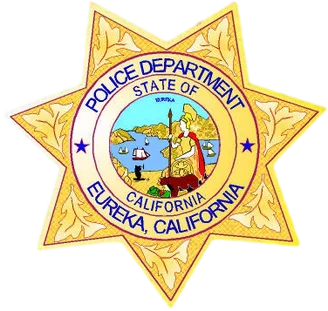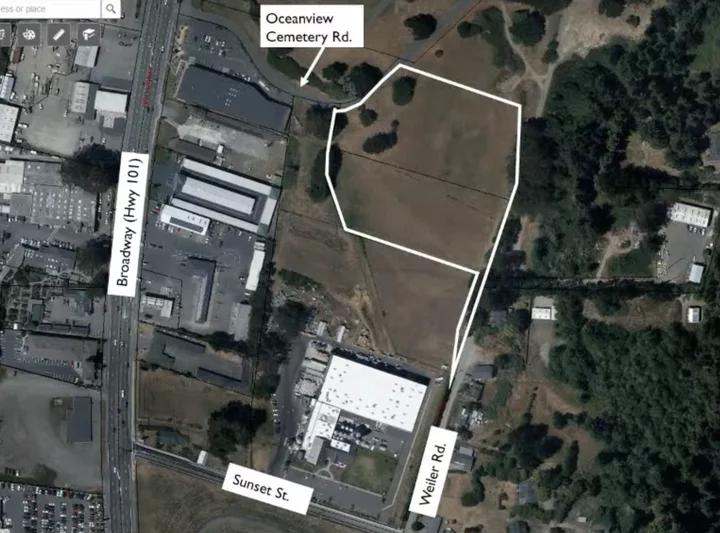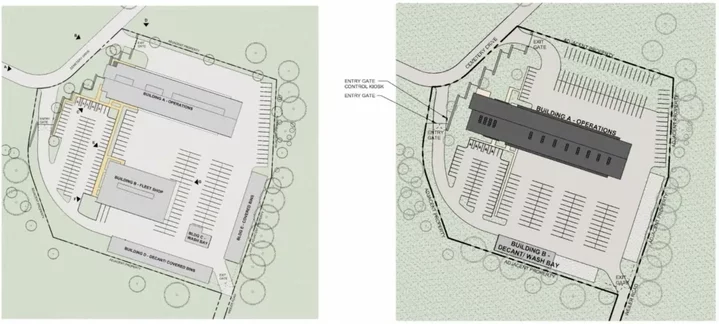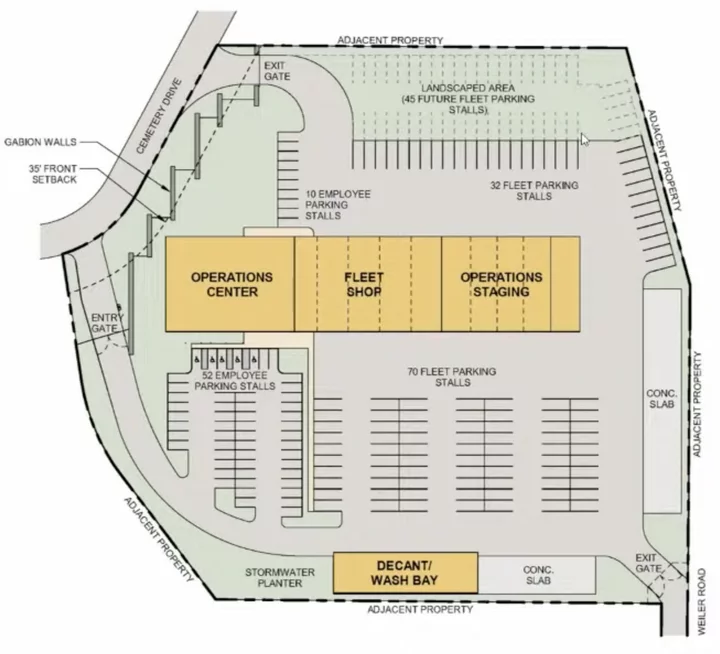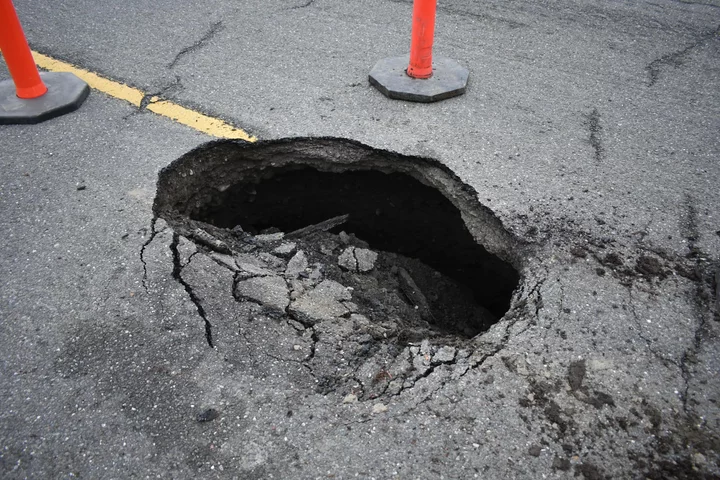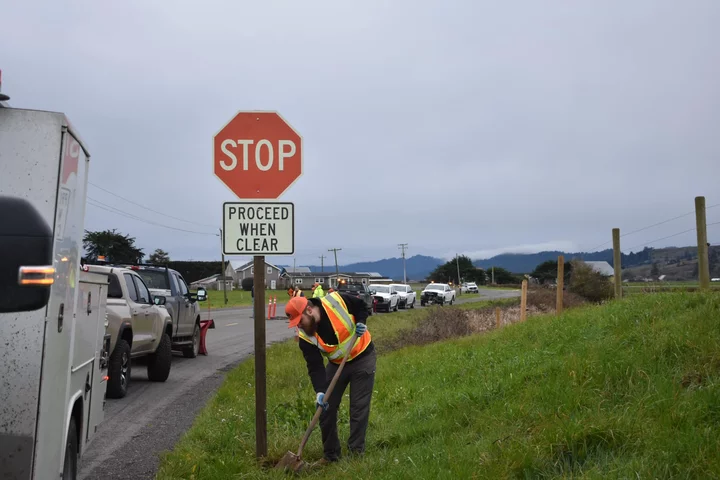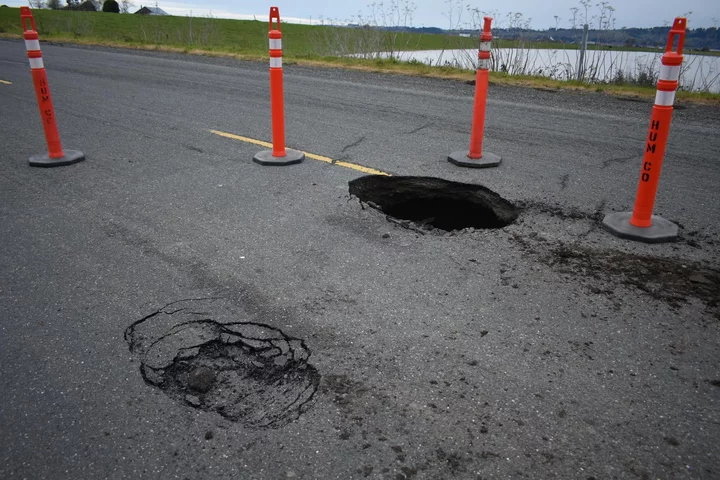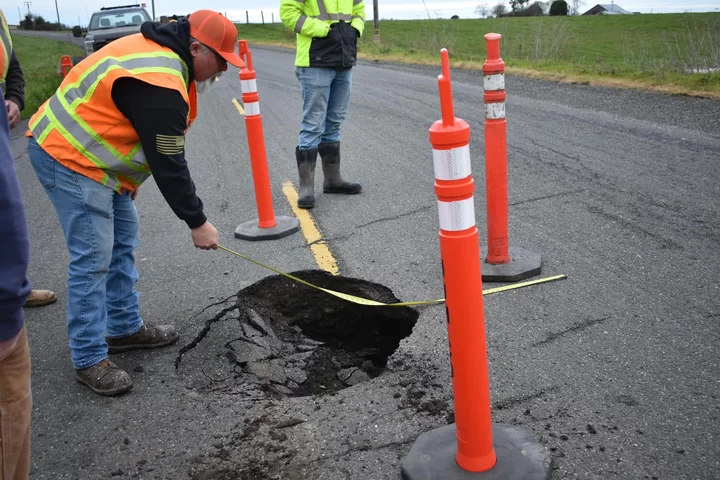Three Already-in-Custody Men Charged in Connection with Last Year’s Redway Armed Robbery
LoCO Staff / Thursday, Feb. 6, 2025 @ 3:07 p.m. / Crime
Humboldt County Sheriff’s Office press release:
On Dec. 7 at about 8:20 p.m., Humboldt County Sheriff’s deputies were dispatched to the 2300 block of Redwood Dr. near Redway for the report of an armed robbery that had occurred about an hour prior.
The victim reported that multiple masked males entered and ransacked the residence before leaving in the victim’s vehicle with cash, cell phone, and personal items including a valuable knife collection and flat screen television. A “be on the lookout” (BOLO) was issued for suspects and the Nissan Frontier that was stolen from the residence.
On Dec. 10, deputies located and recovered the stolen vehicle on the 1000 block of Hallen Dr., Arcata. Detectives carried out a search warrant of the stolen vehicle and cell phone records of one of the suspects, Dauwin Poe. Details shared in text messages and photos from Poe revealed corroborated items that were connected to the Dec. 7 robbery.
Three suspects involved in the robbery—Dauwin Poe (19, of McKinleyville), Cotc Lincoln (38, of Hoopa), and Joseph Lenhart (25, of McKinleyville)—have been identified and were charged in relation to the home invasion robbery. The suspects were already in custody on numerous charges involving gun violence, criminal threats, conspiracy, and other felony charges.
This case is still under investigation.
Anyone with information about this case or related criminal activity is encouraged to call the Humboldt County Sheriff’s Office at (707) 445-7251 or the Sheriff’s Office Crime Tip line at (707) 268-2539.
BOOKED
Today: 7 felonies, 9 misdemeanors, 0 infractions
JUDGED
Humboldt County Superior Court Calendar: Today
CHP REPORTS
No current incidents
ELSEWHERE
Governor’s Office: Governor Newsom slams “brainless Trump” for surrendering global leadership, ceding jobs and economic ground to China
Governor’s Office: Governor Newsom and First Partner meet with impacted communities on the road to recovery
Mad River Union: City Council meets Friday to sign off on local emergency declaration
Mad River Union: Supervisors approve emergency declaration over Arcata blaze’s hazmats
The Whooping Cough is Back! Humboldt Public Health Officials Urge Pertussis Vaccination as Local Cases Rise
LoCO Staff / Thursday, Feb. 6, 2025 @ 2:46 p.m. / Health
Press release from the Humboldt County Department of Health and Human Services:
Local public health officials are stressing the importance of getting vaccinated for pertussis and flu after seeing a recent increase in cases.
Since November 2024, 30 cases of pertussis have been diagnosed locally in people between ages 3 and 70 years old, with most occurring in people 16 and younger.
The highly contagious respiratory illness, also known as whooping cough, typically begins with cold-like symptoms and sometimes a mild cough or fever before progressing to severe coughing fits which can include uncontrollable, violent coughing and can make it difficult to breathe, according to the Centers for Disease Control and Prevention (CDC). Babies with pertussis may not cough, but may gag and gasp instead, as well as have a symptom known as “apnea,” which is a pause in their breathing pattern.
The whooping cough vaccine, known as DTaP, is a combination vaccine that protects against diphtheria, tetanus and whooping cough. The three-dose series can be given to babies at 2, 4 and 6 months old with two booster doses at 15 to 18 months and 4 to 6 years old.
According to the CDC, pertussis is a cyclical bacterial infection that peaks every three to five years. Immunity, whether from getting the vaccine or from having the disease, typically wears off within five years, leaving previously immune children susceptible again by adolescence.
A booster shot is recommended for anyone over 11 years old who has not yet received one.
The illness can be especially dangerous for infants and young children and pregnant people are encouraged to get vaccinated during pregnancy, so they can pass on antibodies which help protect infants from pertussis until they are old enough to be vaccinated.
Locally, 14 cases were reported in 2024 (eight of which were in the last two months of the year), and only one was reported in 2023. The last local outbreak was in 2019, where Humboldt County saw 12 cases (including confirmed, suspected and probable cases).
Additionally, local hospitals are noting an uptick in people coming into the emergency department with the flu. In the past 10 days, they’re reporting 20 to 30 cases a day. Health officials are encouraging people to get their flu vaccine if they haven’t yet.
For additional information about pertussis, visit the California Department of Public Health website, talk to your medical provider or phone the Humboldt County Department of Health & Human Services Communicable Disease Program at 707-268-2182. To make an appointment for a vaccine, contact your health care provider or call the Public Health Clinic at 707-268-2108.
Eureka Police Connect December Old Town Shooting With Gun Spree Elsewhere in the County at the Same Time; Suspect Already in Custody
LoCO Staff / Thursday, Feb. 6, 2025 @ 1:37 p.m. / Crime
PREVIOUSLY:
###
Press release from the Eureka Police Department:
On December 28, 2024, Eureka Police officers were dispatched to the vicinity of 3rd and A Streets for a report of a shooting that had occurred near this location. Two citizens were reported to have been shot at, but were uninjured. Stray rounds from the shooting struck an occupied tent located in the area, however no persons were struck by the gunfire.
Patrol Officers on scene, collected evidence, interviewed witnesses, and identified locations with potential video surveillance of the incident. The investigation was then transferred to the Criminal Investigations Unit.
During the follow-up investigation, it was determined the shooting was likely related to two additional shootings, one occurring in McKinleyville and another on the Hoopa Reservation around the same time period. EPD Detectives worked in collaboration with the Humboldt County Sheriff’s Office and identified Dauwin Poe, (19 years old from McKinleyville), as a person of interest in the shooting. As the investigation progressed, EPD Detectives developed evidence and were able to identify Poe as the shooter in the Eureka shooting.
On February 6, 2025, EPD Detectives responded to the Humboldt County Correctional Facility where Poe was in custody on separate charges. EPD Detectives booked Poe on charges of attempted murder, assault with a firearm and shooting into an occupied structure.
This is still an active investigation and the Eureka Police Department is asking anyone with information about this incident to contact Detective Sergeant Crnich at 707-441-4300.
Eureka City Council Approves $1.4 Million Budget Allocation for New Operations Complex, Corp Yard
Isabella Vanderheiden / Thursday, Feb. 6, 2025 @ 1:21 p.m. / Infrastructure , Local Government
An aerial view of the future Eureka Operations Complex. | Map: City of Eureka
###
On Tuesday, the Eureka City Council approved a $1.4 million budget request to begin site work for the Eureka Operations Complex, a new maintenance facility and corporation yard slated for an undeveloped lot at the southern end of town, behind Lost Coast Brewery’s brewing facilities on Highway 101. The budget allocation will provide the funding needed to get the 5.6-acre site prepped for construction, which is expected to begin once the rain lets up.
The city will move its existing corp yard – the site where it stores and repairs fleet vehicles and other equipment – from its current location at 945 W. 14th Street to the new site, which was purchased from the owners of the Ocean View Cemetery in November 2023. The site plans have been modified to streamline the layout and reduce the overall cost of the project by about $10 million.
“We’re now proposing a one-building scenario,” said Katie Marsolan, a special projects manager in the Public Works Department. “We’re no longer running utilities to two separate structures. … We’re no longer building exterior siding on both and roofing on both. We’re really trying to stretch our dollar as far as possible.”
The project design has been reduced from two buildings to a single structure. | Image: City of Eureka
Construction will be broken into phases to give staff time to secure the rest of the funding needed for the project. Pre-construction services, including site development, grading, constructing underground utilities and building foundations, will begin in just a few months. The remaining construction will take place in 2026.
“We have set a budget of $21 million,” Marsolan said. “We’re looking at a … $7 million target for the site development, $11 million toward the buildings and upright structures at this site, and then $3 million for all those design services, support services and utility connections. … To produce those construction documents and to get us from here to there, we are requesting $1.4 million.”
A detailed rendering of the proposed project. | Image: City of Eureka
Councilmember Kati Moulton asked if the design plans included a buffer to reduce potential noise impacts from loud tools that could interfere with services at the cemetery next door. Marsolan said the city has made a commitment to create a noise buffer as a part of its purchase agreement with Ocean View.
“It might be a buffer with a landscape screen or with fencing, or it might be the way we actually organize the vehicles at the site,” she explained. “We’re still working towards that … and thinking about the grading of the site and how the buildings are positioned.”
“Thank you, I just wanted to make sure that as we’re trying to save money on the project, we’re still trying to also be good neighbors,” Moulton said.
Councilmember Leslie Castellano asked how much money the city would save on the redesign of the project. Marsolan said the previous two-building design would have cost the city nearly $30 million. “Now we’re down close to $20 million, [but] we’re still trying to shave here and there and everywhere.”
During the public comment portion of the meeting, one woman asked about the proximity of the wash bay to the adjacent property and whether the wastewater would drain onto the nearby land. The city’s stormwater permit requires the city to properly dispose of wastewater, Marsolan said. Ideally, the city would have a Vac-Con truck come in and suck up all the muddy water.
“A Vac-Con truck is a really fancy vacuum truck [that] sucks up wet material, and it would come into this site and unload those wet, heavy materials,” she said. “Those are all separated at the site and it all goes into a containment process and a treatment process.”
After a bit of additional discussion, the Castellano made a motion to approve the $1.4 million budget allocation, which was seconded by Councilmember G. Mario Fernandez.
The motion passed in a unanimous 5-0 vote.
###
(PHOTOS) Ferndale Has a Sinkhole
LoCO Staff / Thursday, Feb. 6, 2025 @ 12:18 p.m. / Traffic
Hole | Humboldt County Public Works
As seen earlier today on Humboldt Roads. Humboldt County Public Works release below:
Grizzly Bluff Road, near the intersection of Crosby Road, in the city of Ferndale, has developed a sinkhole due to a deteriorated culvert.
The Ferndale road crew is actively working to address the situation, while the Sign Shop installs proper traffic signage to ensure driver safety. A contractor will also be on-site today to assess and begin repairs.
The road is currently reduced to one-way controlled traffic. Please drive cautiously.
Former Fortuna City Council Member Indicted on Three Counts of Fraud
Dezmond Remington / Thursday, Feb. 6, 2025 @ 12:03 p.m. / Crime
Former Fortuna city council member Christina Mobley was federally indicted yesterday on three counts of fraud.
As first reported by the North Coast Journal, the FBI claims that Mobley, working as an accountant, stole over $500,000 from her employer over the course of almost three years by writing checks made out from the company’s Umpqua bank account, sending them through the mail to Capital One, and then directing the bank to deposit the money in one of two bank accounts she held with Capital One.
Mobley also transferred money electronically from her employer to pay off her credit card payments through Credit One bank and used the business credit card for personal expenses, including cash advances at casinos and airfare and travel expenses. Additionally, the FBI also alleges that Mobley took blank checks the business had in the office for unforeseen expenses and issued them to herself.
She also paid herself for extra hours on the payroll that she didn’t work, gave herself extra vacation time and large bonuses, and duplicated her own payroll checks.
According to the indictment, the embezzlement started no later than January 2022 and didn’t stop until November of 2024. The employer isn’t identified in the indictment, but she told the North Coast Journal in 2022 that she worked for Beacom Construction in Fortuna. Mobley started working there in the ‘90s.
According to the FBI, Mobley deposited roughly $67,000 into her personal Capital One accounts via 15 checks. Mobley paid almost $300,000 of her credit card debt with the company’s money over 107 payments.
Read the indictment here.
(VIDEO) Congressman Huffman Joins Fellow Democrats Seeking to ‘Fire Elon Musk’
LoCO Staff / Thursday, Feb. 6, 2025 @ 11:38 a.m. / Government
North Coast congressman Jared Huffman joined fellow members of the House Progressive Caucus Thursday at a news conference aiming to sound the alarm over Elon Musk and his Department of Government Efficiency (DOGE), which has spent the last couple weeks tinkering with various federal government agencies.
“Every day, Elon and his tech bros ride their skateboards over to a new agency and start crashing into their databases,” Huffman said at Thursday’s event while standing in front of a sign reading “Fire Elon Musk.”
Watch Huffman’s portion of the press conference above or view the event in its entirety here.


